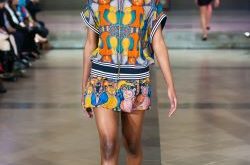The young mind is like a sponge. With their curiosity and intrigue they are constantly observing the world and people around them. They instinctively and instantly learn from us through our lenses of beauty. Children don’t know beauty is in the eye of the beholder. They form their attitudes and opinions on beauty from their interactions with adults, peers, TV shows, movies, newspapers, and social media. Even subtle signs of compliments that are given to others or them on their beauty makes them believe only that is beautiful. They also learn from their parents and adults about their own insecurities with their bodies and soon start to express the same.
It does not take long for them to internalise our ideas of beauty as their own and use it as a barometer of what is beautiful. From peers they learn to know who is receiving more attention and recognition for their beauty and receive popularity for it. They learn to hold beauty against themselves and start to internalise their frustration at themselves for not receiving the admiration and learn that being beautiful helps in receiving admiration and positive regard from others. It makes it hard for a child to love oneself and form a sense of self that is not based on appearance.
While body image concerns affect both boys and girls, research suggests that girls are more likely to be dissatisfied with their appearance and their weight than boys. Statistics today prove that children as young as six are concerned about body image and receive feedback on this from family, peers and society. In fact, 8 in 10 girls say they compare the way they look to other people on social media, and 50% of them are aware and say idealised beauty content and unrealistic filters on social media are damaging to their self-esteem. Poor body image may also prevent young people from engaging in healthy behaviours and they are less likely to take part in physical activities. Among adolescents, research has found that those with greater body appreciation are less likely to diet or use alcohol or cigarettes. Body dissatisfaction and pressure to be thin have been linked to depressive symptoms and symptoms of anxiety disorders such as social anxiety or panic disorder, particularly in those children who do not match societal views of the ‘ideal body’. Cyber bullying and policing on social media can cause mental health problems and identity crises in adolescents.
Children need to be taught that beauty is more on the inside and the focus should be more on character building and humanness. And parents and family members can use open conversations on flawed beauty standards to help children be comfortable in their own skin. When looks do come up, parents, teachers, and other adults can make a point to highlight all different types of beauty, creating a more inclusive definition for children. This will lead to children accepting themselves and increase their confidence. Adults should also use more compliments to children which are not based on outward appearance but on their choice of actions to help them understand beauty doesn’t mean happiness or success in life.
Vahbiz Kerawalla, Counsellor at Jasudben ML School, Mumbai
 Newspatrolling.com News cum Content Syndication Portal Online
Newspatrolling.com News cum Content Syndication Portal Online






